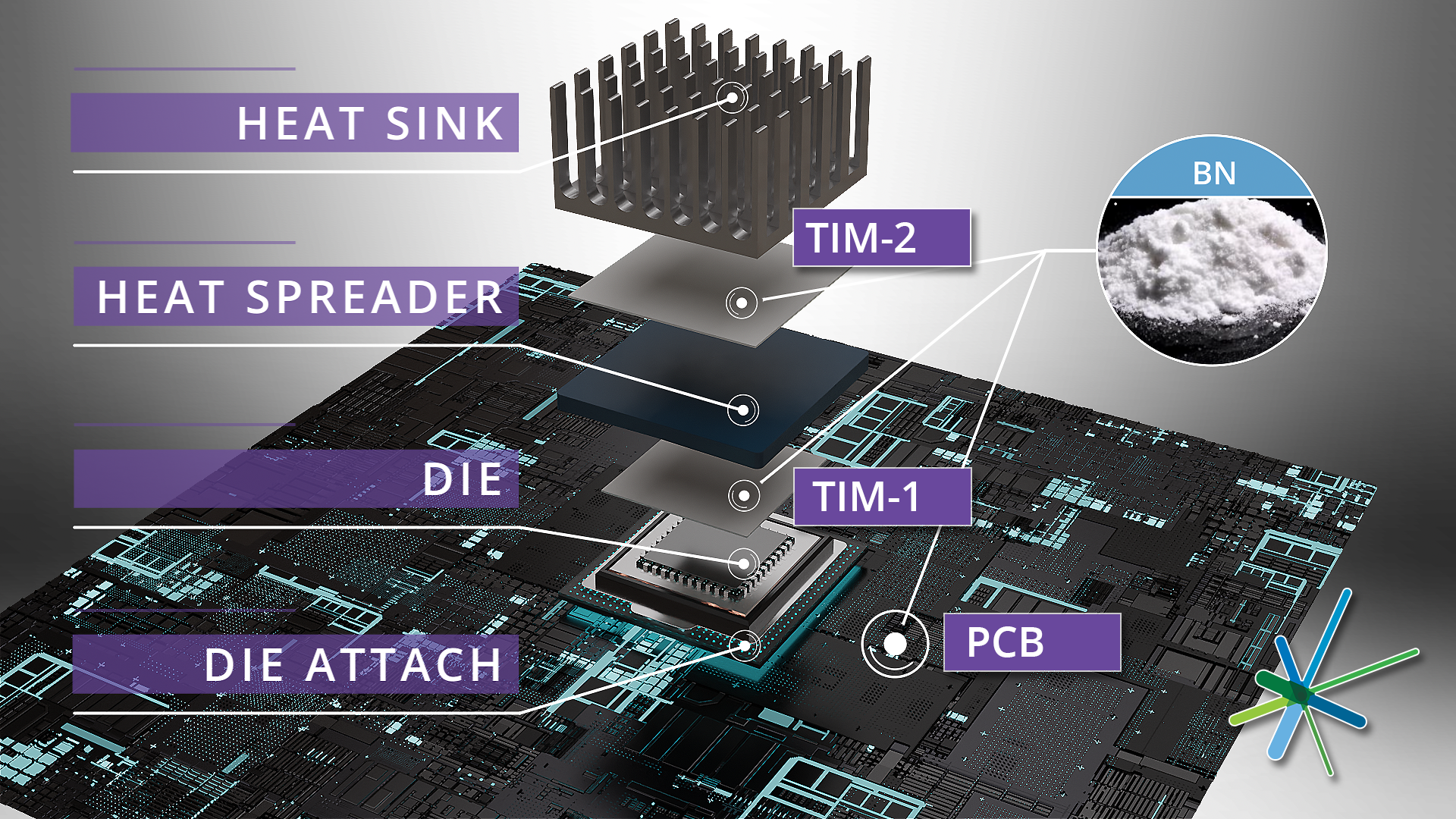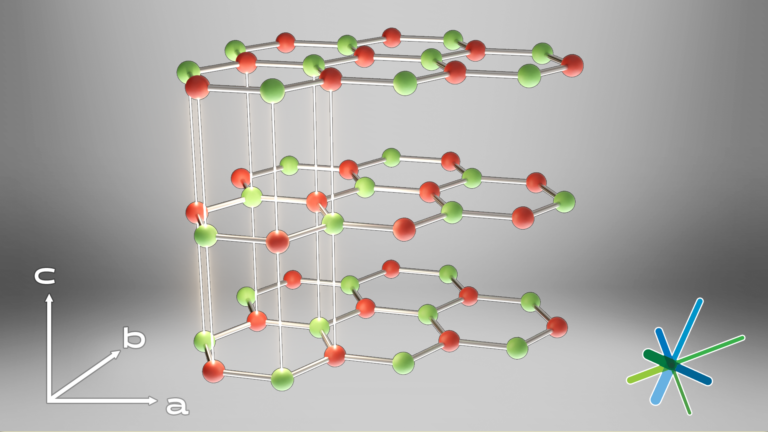The challenge of heat
Heat is one of the major enemies of today’s electronic components and assemblies. It shortens service life and threatens reliability. The challenge grows greater as designers and fabricators are asked to produce assemblies that are smaller and faster, making the need for heat dissipation greater than ever before.
Hexagonal Boron Nitride (BN) Fillers solve the problem. When used in a variety of polymeric materials, BN’s heat dissipating capability helps extend the service life and enhance the reliability of electronic components and assemblies.
Comparing the thermal conductivity of BN fillers to other fillers such as fused silica, aluminum oxide, and aluminum nitride, BN outperforms these materials when used as a filler in polymeric materials. Some BN-polymer materials have achieved thermal conductivity levels as high as 15 w/mK.
BN fillers meet today’s electronic fabrication needs in other ways, too. They are excellent insulators with a dielectric constant of 3.9. That is especially important in today’s thermal management designs in EV and 5G telecommunication. BN fillers are easy to work with because they are made from a soft, lubricious material that provides good flow properties at high loadings. This chemically inert material resists moisture and provides high volume resistivity (above 10 15 ohm-cm).
Thermal Interface Materials Solutions
Various material solutions are available to fulfill these roles, each with its own advantages and disadvantages. Let’s explore some common options:
Adhesives
Adhesive-based TIMs provide excellent mechanical stability and can be used to bond components together securely. They offer good thermal conductivity but may have limitations in terms of re-workability or ease of application.
Greases:
Thermal greases are widely used due to their high thermal conductivity and ease of application. They fill microscopic gaps between surfaces, enhancing thermal transfer efficiency. However, they may require periodic reapplication due to drying out over time.
Gels:
Thermal gels provide good conformability and can fill larger gaps effectively. They offer moderate thermal conductivity but may exhibit higher viscosity, making them more suitable for specific applications where gap filling is critical.
Phase Change Materials (PCMs)
PCMs undergo a phase transition when exposed to temperature changes, allowing them to absorb or release large amounts of energy during operation. This property makes them ideal for applications with varying temperature conditions; however, their relatively low thermal conductivity may limit their use in high-power applications.
Pads
Thermal pads are pre-formed sheets made of materials like silicone or graphite. They offer ease of installation and reworkability, making them suitable for applications where frequent maintenance or component replacement is expected. However, their thermal conductivity may be lower compared to other TIM options.
Exploring Thermal Interface Materials for CHip Devices
In the world of chip devices, the efficient management of heat is crucial for optimal performance and reliability. Figure 1 illustrates a cross-sectional view of a flip chip device with a heat spreader and heat sink attached, highlighting the importance of thermal interface materials (TIMs) in this setup.

The TIM-2 layer acts as an intermediary between the heat spreader and the heat sink, facilitating efficient heat transfer to dissipate it into the surrounding environment.
The TIM-1 layer serves as an interface between the chip and the heat spreader. It plays a vital role in transferring heat from the chip to the spreader, ensuring effective thermal dissipation.
At its core, a Printed Circuit Board (PCB) serves as a platform that provides channels and pathways for electricity and signals to flow within an electronic device. These pathways connect various components such as resistors, capacitors, transistors, and integrated circuits, allowing them to communicate and work together harmoniously.
Die attach plays a vital role in establishing electrical connections between the die and the substrate. It ensures proper signal transmission and power distribution within the device. Additionally, it facilitates efficient heat dissipation from the die to prevent overheating and maintain optimal performance.

Test data. Actual data may vary.


